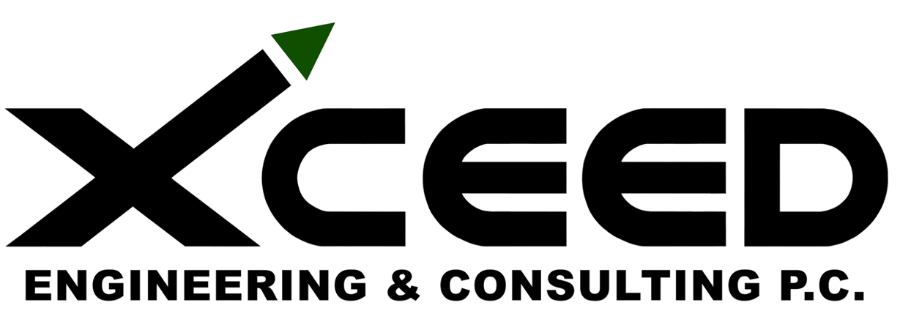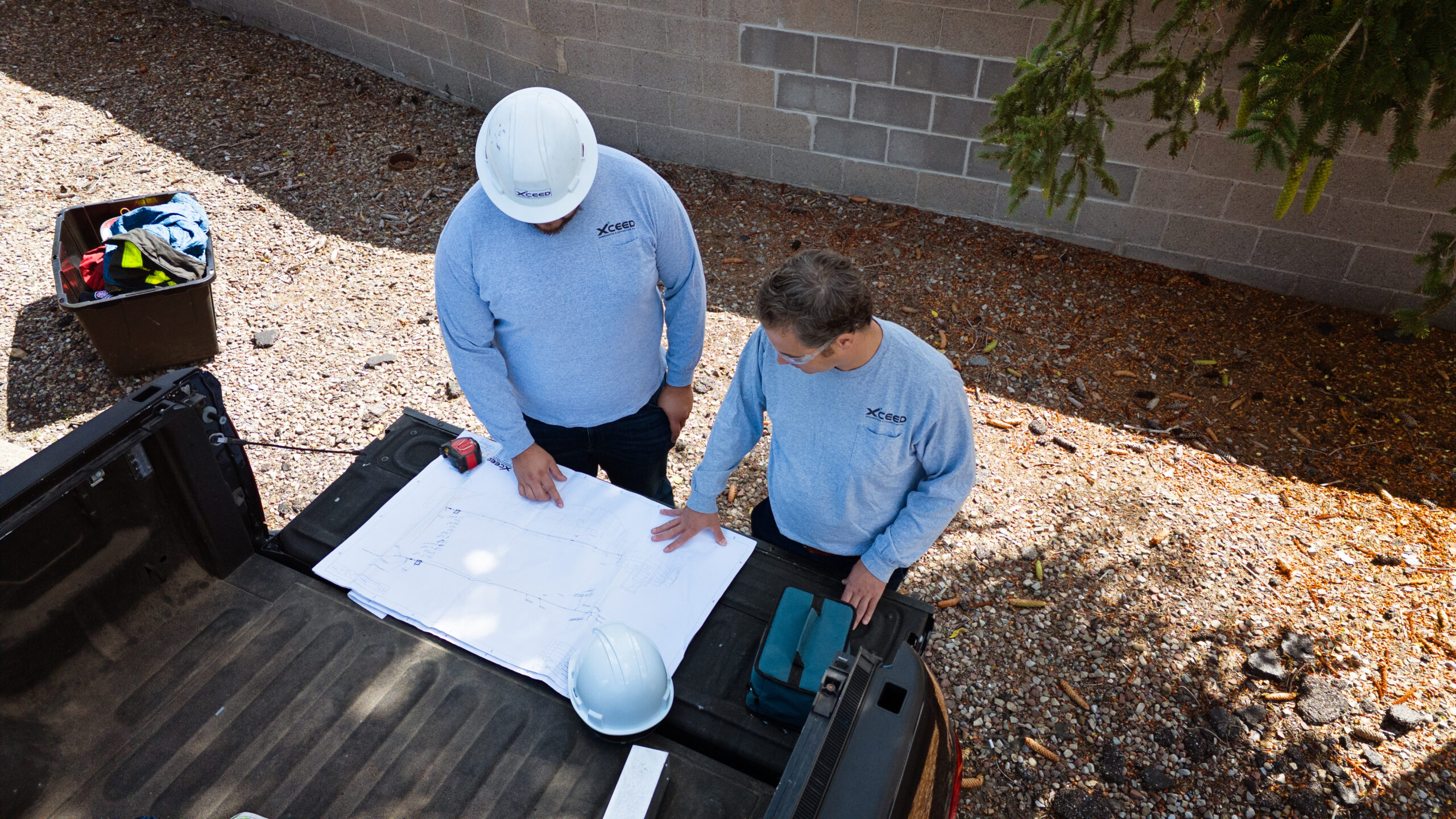When you manage a complex project or critical facility, you feel every risk in the schedule and every dollar in the budget. The work is technical, the stakeholders are demanding, and the margin for error is thin. The good news: most cost and schedule blowups come from a handful of repeatable engineering challenges. If you tackle these early—with the right process and the right partner—you can keep control of scope, cost, and outcomes.
This post breaks down five recurring issues that drive overruns and rework, and shows how to solve them without overspending. You’ll learn where problems hide, how to quantify risk, and howXCEED Engineering helps project teams move fast while protecting the budget.
Key takeaways:
- Pinpoint the root causes of cost creep in design, interfaces, and changes.
- Use practical frameworks to de-risk decisions before you commit capital.
- Apply low-cost, high-yield tactics that save money without cutting quality.
- See how XCEED partners with engineers and equips PMs with credible options.
1) Ambiguous Requirements That Morph Mid-Project
Vague or evolving requirements turn small gaps into big change orders. Teams rush to meet dates, assumptions go undocumented, and “minor tweaks” become scope creep. This is the number one driver of rework across complex projects.
How it shows up
- Conflicting stakeholder needs (operations vs. maintenance vs. safety) that surface late.
- Performance criteria defined as ranges instead of measurable targets.
- “Future-proofing” requests that balloon scope without clear value.
Budget-smart fixes
- Requirements decomposition: Translate high-level goals into testable, measurable, and traceable requirements. Each must tie to a verification method (inspection, analysis, test, or demonstration).
- Assumption logs with buy-in: Document assumptions, owners, and expiration dates. If an assumption stands past a milestone, it gets costed as a risk.
- Decision records: For every requirement trade-off, capture alternatives considered, rationale, and downstream impacts. This prevents painful re-litigations.
How XCEED helps
XCEED leads focused requirement and risk workshops that take hours, not weeks. We use lightweight systems-engineering practices to clarify need-to-haves vs. nice-to-haves, then map verification plans that keep testing lean. In a recent facility upgrade, clarifying airflow and reliability requirements reduced scope by 12% and cut projected commissioning time by three weeks—without downgrading performance.
2) Hidden Interfaces Between Disciplines
Interfaces—mechanical to electrical, controls to process, vendor to site—are where surprises live. Misaligned tolerances, incompatible data tags, and unclear ownership often surface during installation or commissioning, when fixes are costliest.
How it shows up
- Vendor packages with “works on our test stand” performance that don’t match site conditions.
- Control system points that don’t map cleanly, creating orphan signals or missing alarms.
- Physical clashes discovered during construction due to inconsistent models or outdated drawings.
Budget-smart fixes
- Early interface mapping: Identify every physical, functional, and data interface. Couple each interface to an owner and a verification method (e.g., fit-up check, I/O simulation).
- Progressive model validation: Run clash detection and model checks at pre-set design maturity gates (30%, 60%, 90%). Track interface closure metrics to show real progress.
- Vendor integration playbook: Require a common data environment and standard tag dictionaries. Mandate virtual FATs (Factory Acceptance Tests) with site-conditioned scenarios.
How XCEED helps
XCEED’s interface control process integrates 3D model reviews, I/O point lists, and vendor data sheets into a single living matrix. We run short, high-impact interface sprints that close gaps before procurement. On a recent controls retrofit, this avoided 47 hours of rework during commissioning and saved the PM an estimated $180,000 in field change costs.
3) Late Discovery of Constructability and Maintainability Issues
A design that looks fine on paper can be a maintenance headache or a construction nightmare. If you can’t install it safely or service it without major downtime, costs rise for years.
How it shows up
- Equipment placed without clearance for removal paths or rigging.
- Access platforms and egress not aligned with safety rules or operator workflows.
- Materials or fasteners selected without considering field availability.
Budget-smart fixes
- Early constructability reviews: Bring field supervisors and maintenance leads into the 30–60% design windows. Their feedback at this stage is cheap and powerful.
- Maintainability modeling: Simulate service tasks (filter swaps, valve replacement) using the 3D model. Validate reach, access, and tooling.
- Standardization policy: Standard parts lists cut procurement time and reduce spares inventory. Codify this in the basis of design.
How XCEED helps
XCEED runs virtual walkdowns and scenario-based maintenance simulations. We quantify time-to-service for critical components and turn that into cost-of-downtime comparisons you can share with finance. In one critical facility, a layout shift of 14 inches prevented the removal of a major component; catching it in the model cost almost nothing and avoided a six-figure shutdown.
4) Over-Engineering (and Under-Engineering) Through Poor Risk Framing
Without a clear risk model, teams either over-specify (driving cost) or under-specify (driving failures). The smartest path anchors design choices to quantified risk and lifecycle value.
How it shows up
- “Gold-plated” specs: Excess redundancy or premium materials without measurable benefit.
- Minimalist designs that meet nameplate requirements but fail under realistic duty cycles.
- Contingency used as a crutch for unclear scope rather than true risk.
Budget-smart fixes
- Risk-based design criteria: Tie critical performance to credible failure modes and consequences. Use simple risk matrices to justify redundancy, protection, or monitoring.
- Lifecycle cost (LCC) checks: Compare capex vs. opex for key alternatives. Even a quick LCC screen can flag false economies or smart investments.
- Targeted condition monitoring: Add sensors and analytics only where failure risk and consequence justify it, not across the board.
How XCEED helps
XCEED blends reliability engineering with pragmatic cost modeling. We build quick LCC snapshots and failure-mode heat maps that guide smart trade-offs. For a process utility upgrade, our risk-based approach reduced spec-driven costs by 8% while maintaining availability targets, and provided the PM with clear documentation to support the decision with stakeholders.
5) Change Control That’s Slow, Opaque, or Both
Changes happen. The cost damage comes from slow detection, unclear ownership, and poor communication. When change logs lag reality, budgets slide.
How it shows up
- Informal field changes that never make it to engineering records, causing conflicts later.
- Change requests that sit in queues while crews wait or make workarounds.
- PMs learning about scope impacts after the spend is committed.
Budget-smart fixes
- Two-tier change triage: Route changes into “rapid” (low impact, pre-defined authority) and “formal” (cross-discipline review) tracks. Keep cycle times visible.
- Visual change boards: Use simple dashboards that show status, cost/schedule impact, and next action. If there’s no impact statement, it doesn’t get approved.
- As-built discipline: Require immediate redlines and weekly model/drawing syncs. Make it easy—QR codes at work fronts can link to the latest docs.
How XCEED helps
XCEED sets up lean change processes and digital dashboards that integrate with your existing tools. We define authority limits, templates, and SLAs so decisions happen in hours, not days. On a brownfield upgrade, our two-tier workflow cut average change-cycle time by 56% and reduced “ghost scope” by enforcing real-time documentation.
Practical, Low-Cost Tactics You Can Implement Now
- Run a 90-minute requirement scrub: Gather discipline leads and validate the top 20 requirements for clarity, measurability, and verification method. Tag unclear items as risks with owners.
- Build the top 10 interface list: Identify the greatest cross-discipline risks and set closure tests. Don’t boil the ocean; track the ones that can burn you.
- Do a 3D “serviceability sprint”: Pick five critical maintenance tasks and simulate them. Capture photos or screen grabs to align stakeholders.
- Create a one-page risk-to-criteria map: Link critical outcomes (uptime, safety, throughput) to design features and monitoring. This becomes your north star.
- Stand up a rapid-change lane: Pre-authorize a small team to approve low-impact changes with documented cost/schedule notes. Publish cycle times weekly.
How XCEED Engineering Delivers Value Without Ballooning Costs
XCEED is built for complex projects and critical facilities where budget control and reliability both matter. We partner first with individual contributors—the engineers feeling the “itch” of recurring problems—then equip Project Managers with the tools to scale solutions efficiently. By focusing on the details that often go unnoticed, XCEED ensures that small, incremental improvements lead to significant long-term gains. Our approach emphasizes transparency, collaboration, and innovation, enabling teams to address challenges effectively and implement changes without unnecessary delays or cost overruns.
We prioritize flexibility to adapt to evolving project needs while maintaining a strong commitment to quality. XCEED’s method ensures that every decision is data-driven, empowering teams to make informed choices that align with both project goals and financial constraints. This results in measurable outcomes that deliver real value to our clients and their stakeholders.
Our approach is centered on fostering collaboration and transparency at every stage of the project. By engaging stakeholders early and maintaining open lines of communication, we build trust and ensure that all perspectives are considered. This inclusive strategy not only strengthens partnerships but also helps to identify potential challenges before they escalate. Furthermore, XCEED leverages advanced tools and technologies to monitor progress and measure success, ensuring that our clients receive regular updates and insights. Through this proactive and client-focused approach, we consistently exceed expectations and deliver results that drive long-term success.

